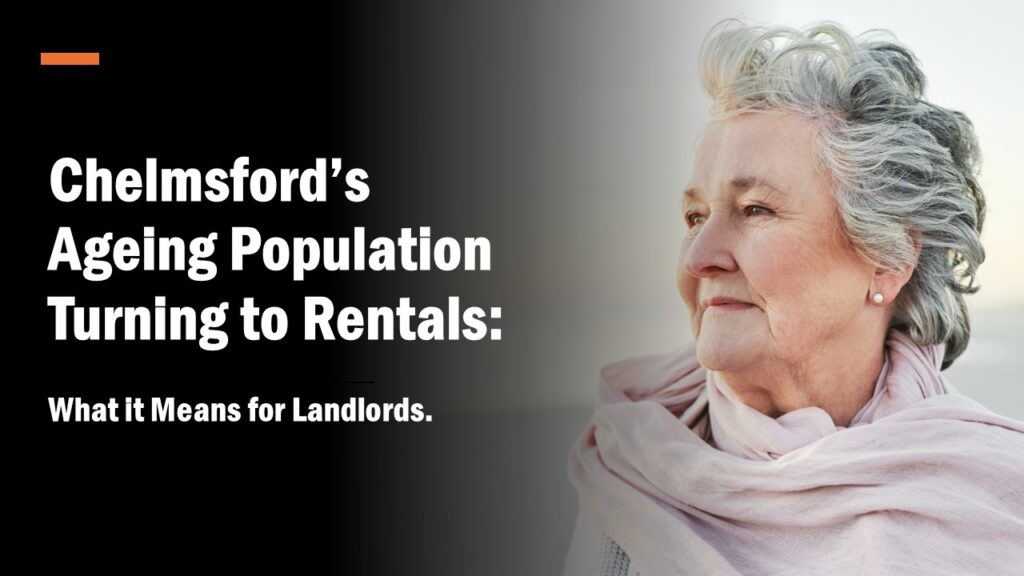 Rentals
Rentals
28 Nov 2024
Chelmsford’s Ageing Population Turning to Rentals: What it Means for Landlords.
Recent figures from the Office for National Statistics …

Rentals
The PRS (Private Rental Sector) in the UK has grown considerably in both size and importance over the last five years and is now worth a staggering £1.29 trillion. To contextualise, that is 1.29 million stacks of pound coins, with each stack being a million coins high. The PRS now makes up 18% of the housing stock in England alone and is expected to rise to more than a third by 2032.
Because of this rampant growth, it is no surprise to see that 15.1% of homes in Chelmsford are privately rented, which is encouraging for private landlords and would-be investors. Even homeowners have something to think about, as they may be tempted to turn the family home into a source of income, or indeed use their pension pot to become a landlord.
A decade ago, buying a home was a very different experience. Post-credit crunch the landscape in Chelmsford has changed, with many younger people unable to buy their own homes due to house price growth outpacing wages. This has made it both logical and practical for many people to rent, choosing between renting privately or using the options available from the local housing association.
10 years ago, of the 39,790 households in Chelmsford, around 35,420 were owner-occupied. Today the number of households in Chelmsford has risen to 43,200, with the number of owner-occupied properties rising to 35,770. In 2001, only 4,120 properties were rented by private tenants compared to 2011’s figure of 6,530 — an increase of 58.5%.
Long gone are the days when tenants viewed rented accommodation as a stopgap; today many renters are in it for the long haul, often taking initial two-year contracts and sometimes staying for up to five years or longer. While this is ultimately good news for private landlords wanting to minimise void periods, it also means that tenants have higher expectations and are more discerning about their rented homes. They are inclined to pay that little bit extra to get exactly what they desire from a home, and landlords will need to ensure their properties are in the best condition possible if they are going to maximise their return.
There is certainly a benefit for landlords who run their property portfolios as a business; the attention to detail that comes from this approach will help mitigate the expected refurbishment losses from reduced tax relief in the years ahead. The reduction in tax relief from 45% to 20% will affect buy-to-let landlord investors over the next few years and probably put some people off becoming landlords. However, the ones who are savvy and make the most informed decisions will continue to prosper in the PRS.
Lets get started! Our valuations are based on our extensive knowledge of the whole of the market.
Get a valuation